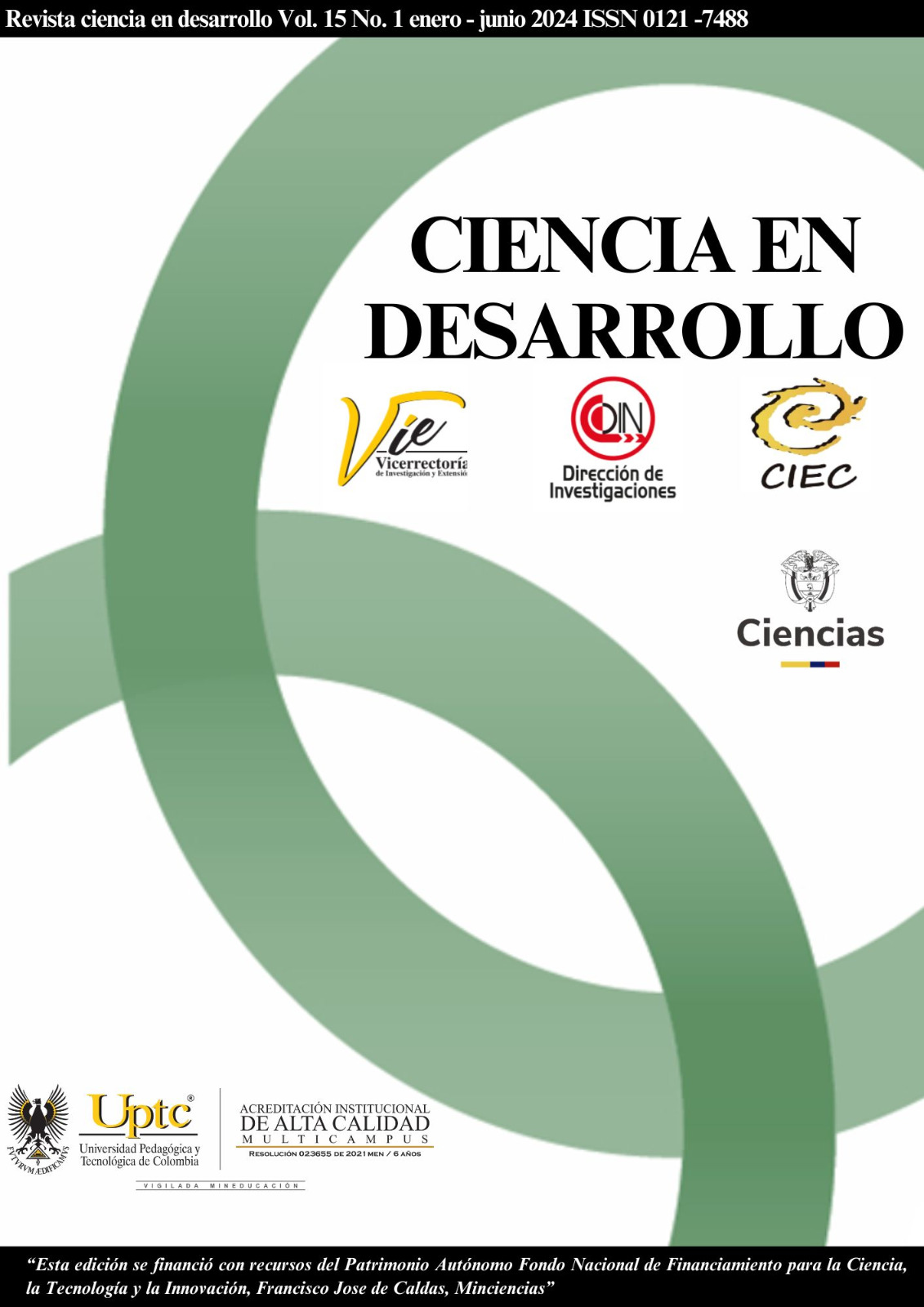A note on zeros of orthogonal polynomials generated by canonical transformations

Abstract
In this work, the behavior of zeros of orthogonal polynomials associated with canonical spectral transformations of weight functions on $[0,\infty)$ is studied. Namely, by means of standard techniques, we obtain interlacing properties for zeros associated with some particular cases of rational and Christoffel transformations
Keywords
Orthogonal polynomials, Canonical transformations, Zeros
References
- E. B. Christoffel, “U¨ ber die Gaussische Quadratur und eine Verallgemeinerung derselben”, Journal f¨ur die reine und angewandte Mathematik, vol. 55, pp. 61-82, 1858. http://eudml.org/doc/147722.
- T.S. Chihara, An introduction to Orthogonal Polynomials, Gordon and Breach, New York, 1978.
- G. Szeg˝o, Orthogonal Polynomials, 4th ed.American Mathematical Society Colloquim Publication Series,
- vol. 23, American Mathematical Society, Providence, RI, 1975.
- G.J. Yoon, “Darboux transforms and orthogonal polynomials”, Bull. Korean Math. Soc. vol. 39, pp. 359–
- , 2002. https://doi.org/10.4134/BKMS.2002.39.3. 359.
- S. Elhay, J. Kautsky, “Jacobi matrices for measures modified by a rational factor”, Numer. Algorithms,
- vol. 6, pp. 205-227, 1994. https://doi.org/10.1007/ BF02142672.
- B. X. Fejzullahu,R. X. Zejnullahu, “Orthogonal polynomials with respect to the Laguerre measure perturbed
- by the canonical transformations”, Integ. Transf. Spec. Funct. vol. 21, pp. 569-580, 2010. https://doi. org/10.1080/10652460903442032.
- E. Huertas, F. Marcell´an, B. Xh. Fejnullahu, R.Xh. Zejnullahu, “On orthogonal polynomials with respect
- to certain discrete Sobolev inner product”, Pacific J. Math. vol. 257-1, pp. 167-188, 2012. DOI:
- 2140/pjm.2012.257.167.
- E. J. Huertas, F. Marcell´an, F. R. Rafaeli, “Zeros of orthogonal polynomials generated by canonical perturbations
- on measures”, Appl. Math. Comput. vol. 218, pp. 7109–7127, 2012. https://doi.org/10.1016/j.amc.
- 12.073.
- V. B. Uvarov, “Relation between polynomials orthogonal with different weights”, (in Russian), Dokl. Akad.
- Nauk SSSR vol. 126, pp. 33–36, 1959.
- V. B. Uvarov, “The connection between systems of polynomials that are orthogonal with respect to different
- distributionfunctions”, (in Russian), Z. Vycisl. Mat. i Mat. Fiz. vol. 9, pp. 1253–1262, 1969. [English translation in USSR Comput. Math. Math. Phys. vol. 9, pp. 25–36, 1969]. https://doi.org/10.1016/0041-5553(69)90124-4.
- A. Zhedanov, “Rational spectral transformations and orthogonal polynomials”, J. Comput. Appl. Math.
- vol. 85, pp. 67–86, 1997. https://doi.org/10.1016/S0377-0427(97)00130-1.
- Ya.L. Geronimus, “On the polynomials orthogonal with respect to a given number sequence”, Zap. Mat.
- Otdel. Khar’kov. Univers. i NII Mat. i Mehan. vol. 17, pp. 3-18, 1940.
- Ya.L. Geronimus, “On the polynomials orthogonal with respect to a given number sequence and a theorem byW. Hahn”, lzv. Akad. Nauk SSSR, vol. 4-2, pp. 215-228, 1940. http://mi.mathnet.ru/eng/izv/v4/i2/p215.
- A. Branquinho, F. Marcell´an, “Generating new classes of orthogonal polynomials”, Int. J. Math.
- Math. Sci. vol. 19(4), pp. 643–656, 1996. DOI: 10.1155/S0161171296000919.
- M.I. Bueno, A. Dea˜no, E. Tavernetti, “A new algorithm for computing the Geronimus transformation with large
- shifts”, Numer. Alg. vol. 54, pp. 101–139, 2010. https://doi.org/10.1007/s11075-009-9325-9.
- M.I. Bueno, F. Marcell´an, “Darboux transformations and perturbation of linear functionals”, Linear Algebra
- Appl. vol. 384, pp. 215–242, 2004. https://doi.org/10.1016/j.laa.2004.02.004
- M. Derevyagin, F. Marcell´an, “A note on the Geronimus transformation and Sobolev orthogonal polynomials”,
- Numer. Algorithms, vol. 67, pp. 1–17, 2013. https://doi.org/10.1007/s11075-013-9788-6.
- W. Gautschi, Orthogonal Polynomials: Computation and Approximation. Numerical Mathematics and
- Scientific Computation Series. Oxford University Press, New York, 2004.
- P. Maroni, “Sur la suite de Polynˆomes Orthogonaux Associ´ee `a la forme u = δ(c)+λ(x−c)−1L”. Period.
- Math. Hungar. vol. 21(3), pp. 223–248, 1990. https://doi.org/10.1007/bf02651091.
- V. Spiridonov, A. Zhedanov, “Discrete-time Volterra chain and classical orthogonal polynomials”, J. Phys. A. Math. Gen. vol. 30-24, pp. 8727–8737, 1997. DOI 10.1088/0305-4470/30/24/031.
- B. X. Fejzullahu, “Asymptotics for orthogonal polynomials with respect to the Laguerre measure modified by a rational factor”, Acta Sci. Math. .Szeged. vol. 77, pp. 73–85, 2011. https://doi.org/10.1007/BF03651367.
- D. Galant, “An implementation of Christoffel’s theorem in the theory of orthogonal polynomials”, Math. Comp. vol. 25, pp. 111–113, 1979. DOI:10.1090/S0025-5718-1971-0288954-8.
- D. Galant, “Algebraic methods for modified orthogonal polynomials”, Math. Comp. 59, pp. 541–546,
- DOI: https://doi.org/10.1090/S0025-5718-1992-1140648-6.
- W. Gautschi, “An algorithmic implementation of the generalized Christoffel theorem”, in: G. H¨ammerlin (Ed.), Numerical Integration, Internat. Ser. Numer. Math., vol. 57, Birkh¨auser, Basel, pp. 89–106, 1982. https://doi.org/10.1007/978-3-0348-6308-79
- C.F. Bracciali, D.K. Dimitrov, A. Sri Ranga, “Chain sequences and symmetric generalized orthogonal polynomials”, J. Comput. Appl. Math. vol.143, pp. 95- 106, 2002. https://doi.org/10.1016/S0377-0427(01)00499-X.
- C. Brezinski, K. Driver, M. Redivo-Zaglia, ”Quasiorthogonality with applications to some families of
- classical orthogonal polynomials”, Appl. Numer. Math. vol. 48, pp. 157–168, February 2004. https://doi.org/
- 1016/j.apnum.2003.10.001.
- J.A. Shohat, .On mechanical quadratures, in particular, with positive coefficients”, Trans. Amer. Math. Soc.
- vol 42-3, pp. 461–496, November 1937. https://doi.org/10.2307/1989740.
- W. Van Assche, .Orthogonal polynomials, associated polynomials and functions of the second kind”, J. Comput.
- Appl. Math. vol. 37, pp. 237-249, November 1991. https://doi.org/10.1016/0377-0427(91)90121-Y.
Downloads
Download data is not yet available.